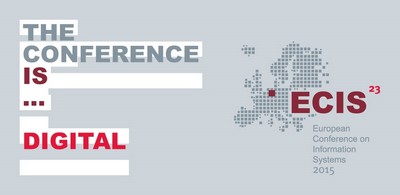DOI
10.18151/7217282
Abstract
Two current trends are changing the IT industry and the ways we develop IT solutions; we suggest to call them heavyweight and lightweight IT. Heavyweight IT is the traditional systems and databases, which are becoming more sophisticated and expensive through advanced integration. Lightweight IT is the new paradigm of mobile apps, sensors and bring-your-own-device, also called consumerisation or Internet-of-Things. The key aspect of lightweight IT is not only the cheap and available technology as such, but the fact that its deployment is frequently done by users or vendors, bypassing the IT departments. Drawing on the theoretical lens of generativity, our research questions are, how is generativity different in heavyweight and lightweight IT, and what is the generative relationship between heavyweight and lightweight IT? \ \ These questions were investigated through a study of four cases in the health sector. Our findings show that (i) generativity enfolds differently in heavyweight and lightweight IT and (ii) generativity in digital infrastructures is supported by the interaction of loosely coupled heavyweight and lightweight IT. The practical design implication is that heavyweight and lightweight IT should be only loosely integrated, both in terms of technology, standardisation and organisation. \
Recommended Citation
Bygstad, Bendik, "The Coming of Lightweight IT" (2015). ECIS 2015 Completed Research Papers. Paper 22.
ISBN 978-3-00-050284-2
https://aisel.aisnet.org/ecis2015_cr/22


